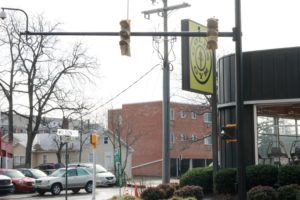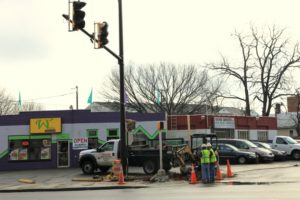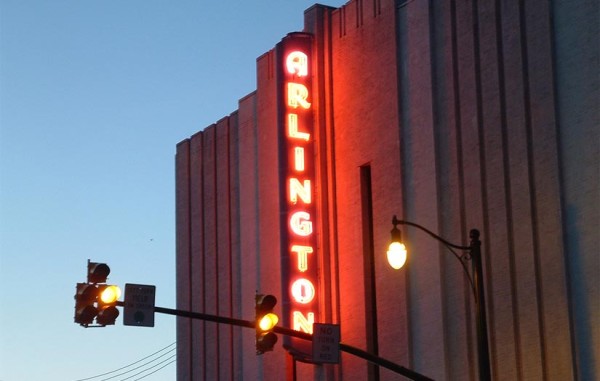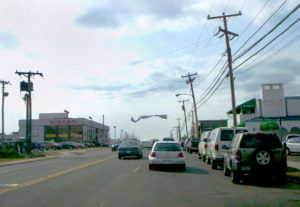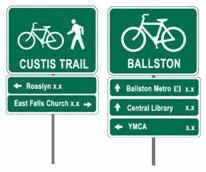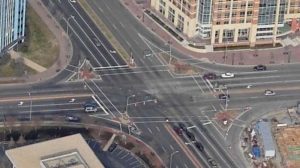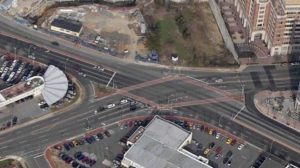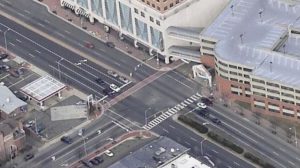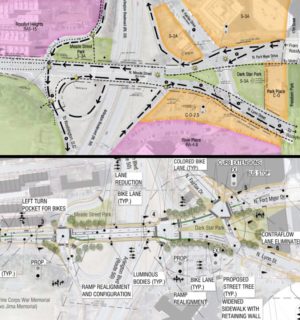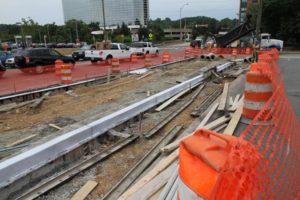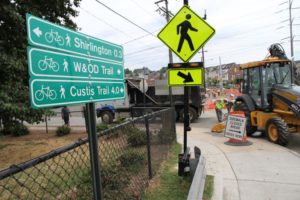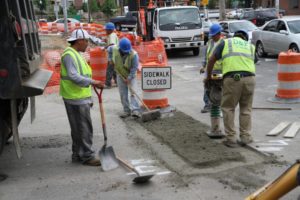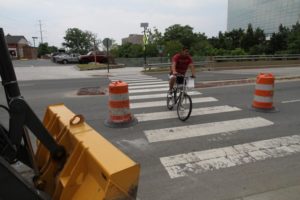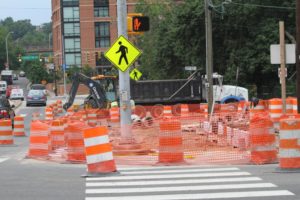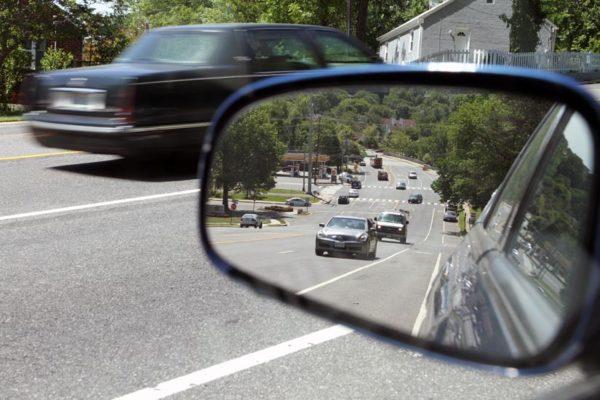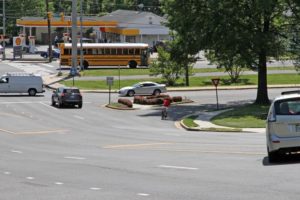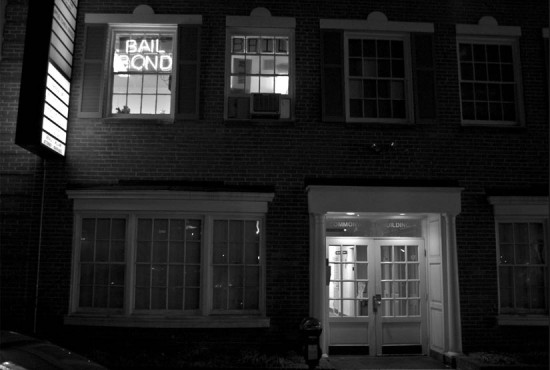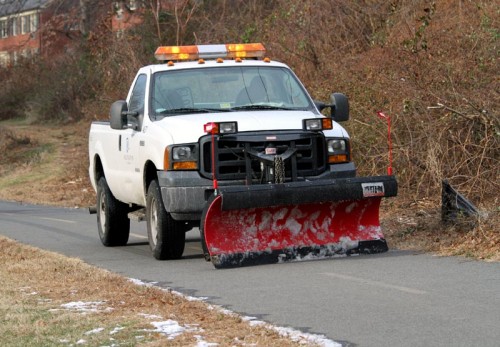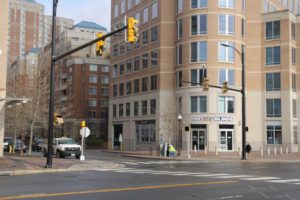 (Updated at 1:50 p.m.) The long-awaited unveiling of the new traffic signals on Wilson Boulevard at N. Pollard Street should be happening soon. In fact, they should be working before the start of the weekend.
(Updated at 1:50 p.m.) The long-awaited unveiling of the new traffic signals on Wilson Boulevard at N. Pollard Street should be happening soon. In fact, they should be working before the start of the weekend.
The lights were installed a couple of months ago, but have remained covered up. Concerned about pedestrian safety, some residents have been emailing ARLnow.com to ask when the lights would begin functioning. One reader compared crossing the intersection to maneuvering through a video game.
“Too many people play ‘Frogger’ at night trying to go to and from the Gold’s Gym,” the reader wrote.
Arlington Department of Environmental Services spokeswoman Shannon Whalen McDaniel said the county’s installation of the lights has been completed, and Dominion Virginia Power just needs to supply electricity. Dominion tells us the lights should be turned on either today or tomorrow, barring any unforeseen circumstances.
Today a crew was at the intersection repairing the sidewalk that had been torn up to install the lights.


